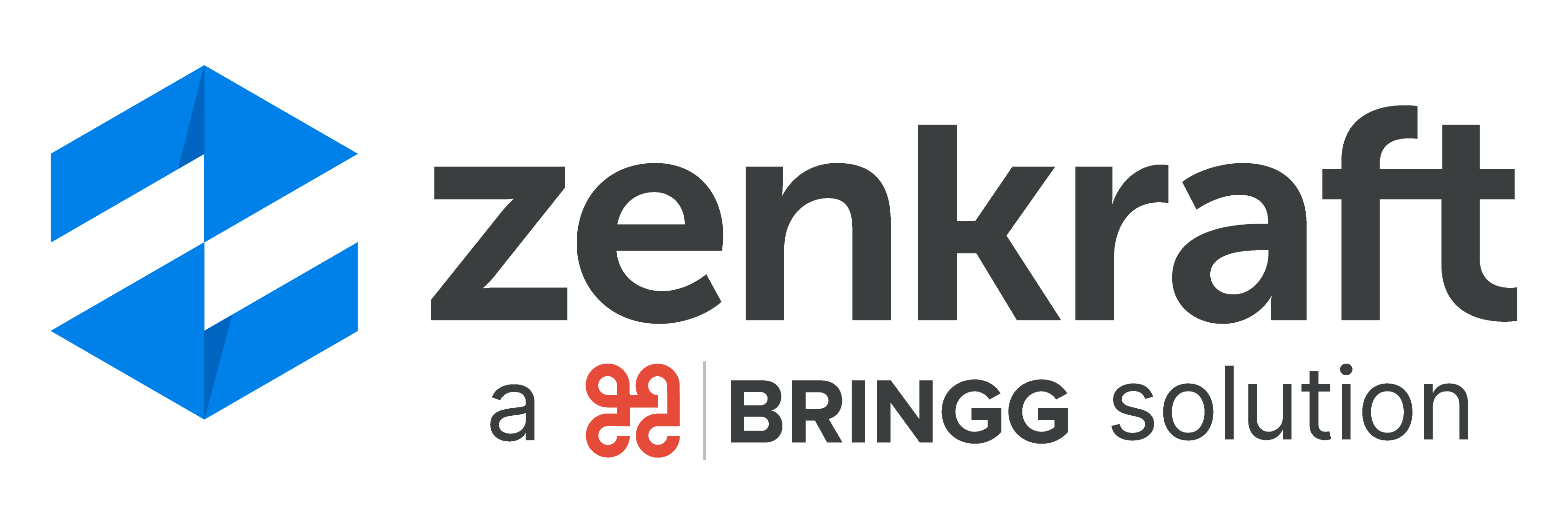Introduction
When it comes to shipping, studies show that what users really care about is not “shipping speed” but rather the date of delivery, as in: “When will I receive my order?”
The majority of e-commerce sites still provide shipping options such as “delivers in 3-6 days” or “next-day delivery” with a cut-off time such as “Order by 5pm”. This creates a bad user experience for the customer because they have to work out a.) what dates are 3-6 days out b.) if there weekends which will affect the delivery date c.) holidays d.) whether the order cut-off time has passed e.) whether it’s a peak time in the warehouse which will delay the order.
What is the best way for retailers to provide Estimated Delivery Dates in Salesforce Commerce Cloud? There are two options:
- Build the logic themselves. This will involve a combination of carrier shipping API integration, some logic to determine the points mentioned above plus some knowledge of the carrier networks and how different service types perform across zones.
- Use a Cartridge like Zenkraft’s to provide drop-in functionality.
Below we are highlighting 5 examples in Salesforce Commerce Cloud of where the Zenkraft Cartridge’s Estimated Delivery Date (“EDD”) can be used effectively:
1. Get estimated delivery dates on the product page
According to Baymard’s Product Page study, 64% of users looked for shipping costs on the product page, before deciding to add a product to the cart. Why shouldn’t you implement the same on your page like below:
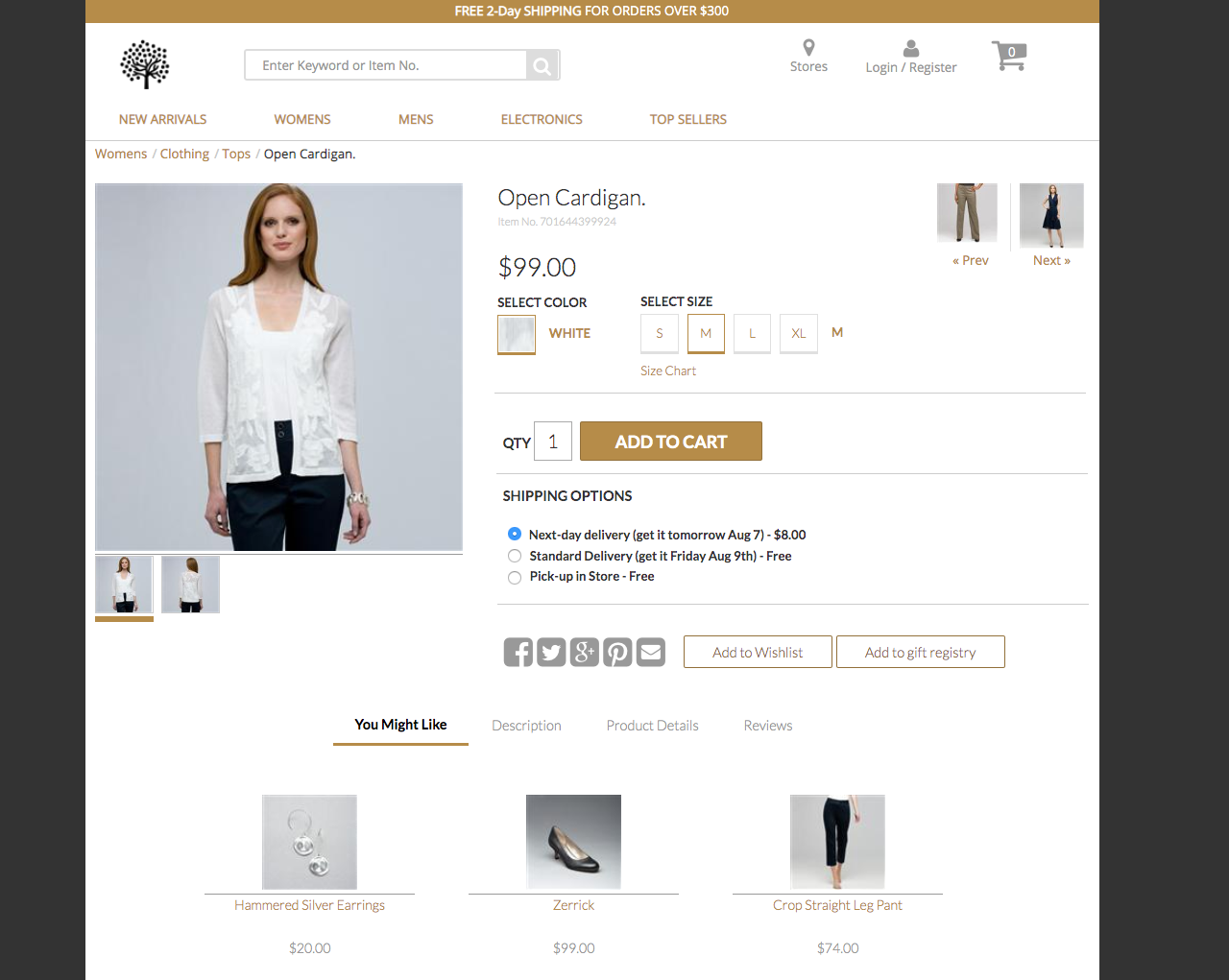
2. Add estimated delivery dates to the checkout process
We recommend having a free standard and expedited shipping method available in checkout. In addition, if you have physical stores, you should offer in-store pickup. If you don’t have physical stores you might also consider UPS MyChoice or FedEx Office drop-off locations.
You might choose to display the name of the service type along with the actual cost.
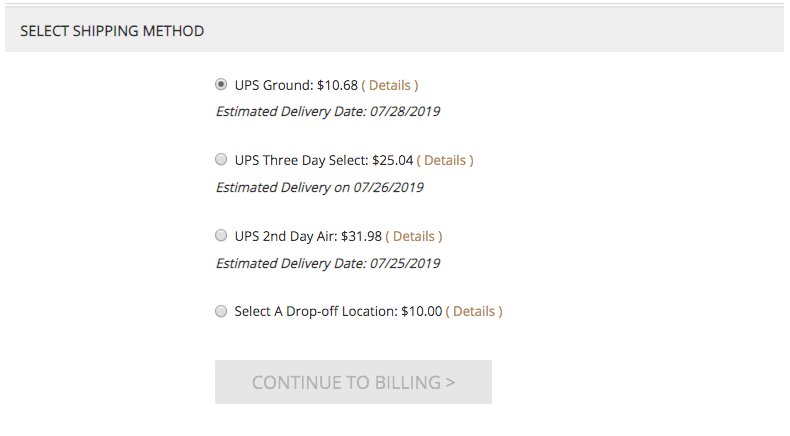
Or with some CSS styles and formatting you can apply a better user experience such as in the page below. This is taking into account holidays and warehouse cut-off times:
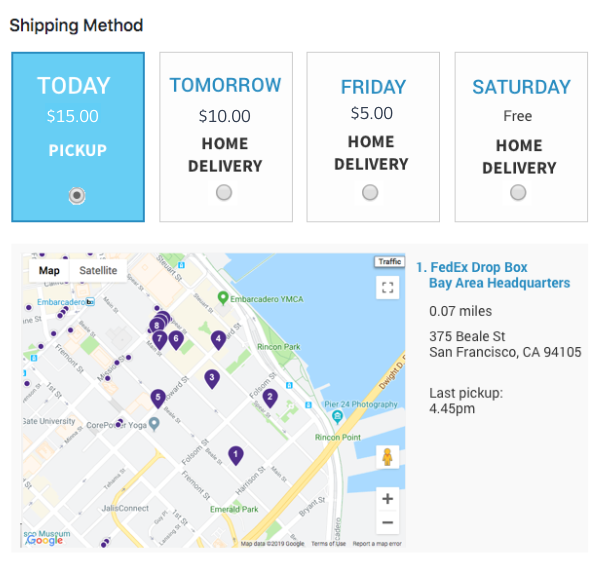
3. Support Drop Off and Pickup Locations
Having your parcel delivered to a drop-off location provides the most flexibility for the cost. It’s often cheaper than other methods. Most delivery and collection points are open 7 days a week and are always found at the most convenient places. Often, they can be found in petrol stations, local shops, supermarkets and high street stores. Within the US, it’s pretty straight forward to offer Drop-off options with our FedEx and UPS locations plotted on the Google Map as shown below:
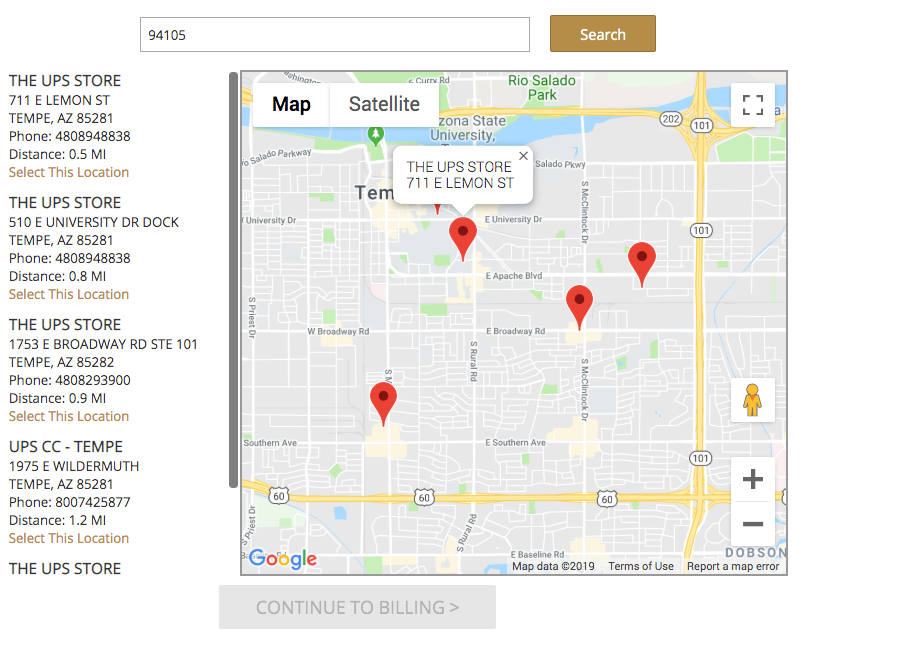
In Europe, it’s slightly more challenging because there are many more carriers (DHL, DPD, Hermes to name a few). Most have a drop-off network or partner with a third-party service such as Collect+ in the UK. Please contact us for more information.
Better still, if you’re an omni-channel retailer you should clearly show that in-store pickup is available on the product page and during checkout as an additional shipping option. It can act as a permanent free shipping option for your customers.
4. Add EDD to your tracking pages
Once the order is shipped it’s possible that the carrier might change the estimated delivery date. Therefore you should add the estimated delivery date to your tracking page. On our tracking page below you can see that we’ve added Einstein Product Recommendations using a content slot on the right hand side. The page is built using ISML so you’re free to edit and style it as you choose:
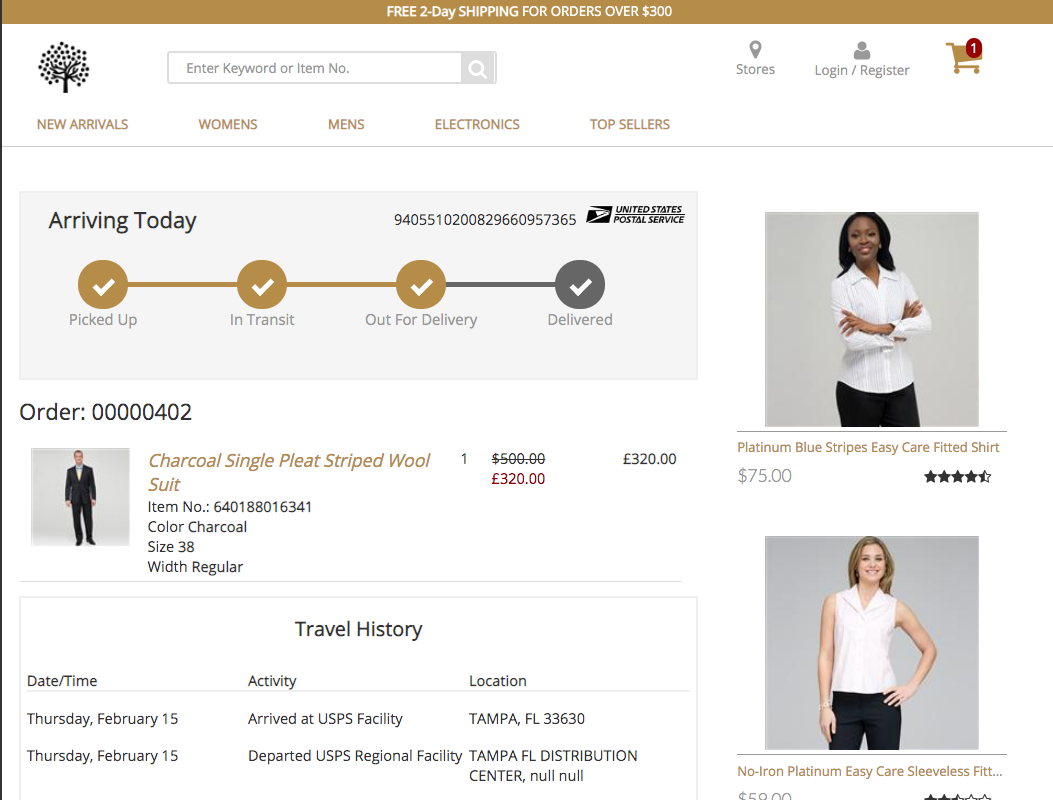
5. Send Changes to your EDD directly to your customer
If there is a failed delivery attempt, or the shipment is delayed due to bad weather, then you should alert your customer as soon as possible. Email is generally the best way which you can either send directly from Commerce Cloud or you can integrate into your ESP (email service provider) to send from there:
To summarize, using Estimated Delivery Dates effectively on your store will have a profound impact on your conversion rates both on product pages and during checkout. They’ll also increase customer satisfaction because you’ll be keeping your customers up-to-date with the shipment status. As the founder of FedEx Fred Smith once said, "The information about the package is as important as the package itself."
